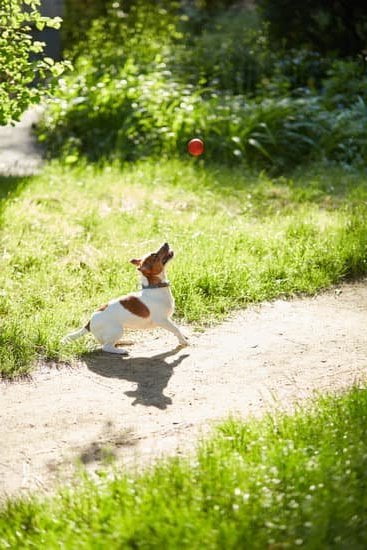Are you tired of your dog dragging you down the street every time you go for a walk? Learning how to train dogs not to pull on leash is an essential skill for both pet owners and their furry companions.
Understanding the behavior of dogs when pulling on the leash is the first step towards effective training. In this article, we will explore the negative impacts of leash pulling, the importance of patience and consistency, choosing the right collar and leash, step-by-step training methods, utilizing positive reinforcement techniques, common mistakes to avoid, as well as troubleshooting leash pulling issues.
Leash pulling is a common behavior among dogs and can be frustrating for owners. Whether they are excited, anxious, or simply trying to take control of their surroundings, understanding the reasons behind this behavior is crucial in addressing it effectively. This section will delve into the psychology behind why dogs pull on the leash and provide insight into how to modify this behavior through proper training techniques.
The negative impacts of leash pulling extend beyond just being a nuisance during walks. It can lead to physical discomfort or injury for both the dog and the owner. Additionally, it can create tension in the relationship between them. By recognizing these consequences, pet owners can gain a better understanding of why it’s essential to train their dogs not to pull on the leash and commit themselves to patient and consistent training methods.
The Negative Impacts of Leash Pulling on Both the Dog and the Owner
Leash pulling is a common behavior in dogs and can have negative impacts on both the dog and the owner. When a dog pulls on the leash, it can cause discomfort for the owner and may lead to frustration.
Additionally, leash pulling can result in physical issues for the dog, such as neck strain or tracheal damage. It can also make walks less enjoyable for both the owner and the dog, as it creates tension and makes it difficult to maintain control.
For the dog, leash pulling can lead to an imbalance in their gait and posture, which could potentially cause long-term health problems. In extreme cases, leash pulling can also lead to injuries such as sprained limbs or ligaments.
The constant pressure on the neck from pulling can also affect a dog’s thyroid function over time. Additionally, leash pulling can make it challenging for a dog to socialize with other dogs and interact with their environment during walks, leading to behavioral issues over time.
The impact of leash pulling extends beyond physical effects – it also affects the emotional well-being of both the dog and the owner. For owners, dealing with a dog that pulls on the leash can be frustrating and stressful, affecting their overall enjoyment of spending time with their pet.
For dogs, being constantly corrected or restrained due to leash pulling can lead to anxiety and fear during walks. Recognizing these negative impacts underscores the importance of addressing leash pulling behavior through proper training techniques.
The Importance of Patience and Consistency in Leash Training
Dogs are naturally curious and energetic animals, so it’s not surprising that they often want to pull on the leash when going for a walk. It’s important for dog owners to understand that this behavior is completely normal and can be addressed through proper training. The key to successfully teaching a dog not to pull on the leash lies in patience and consistency.
When dogs are being trained not to pull on the leash, it’s crucial for owners to remember that this process takes time. Rushing or expecting immediate results will only lead to frustration for both the owner and the dog.
Consistency is also vital in reinforcing new behaviors, as dogs thrive on routine and clear expectations. By consistently reinforcing the desired behavior during walks, such as walking calmly by the owner’s side, dogs will gradually learn what is expected of them.
According to experts, employing positive reinforcement techniques during leash training can help make the process more effective. This involves rewarding the dog with treats or praise when they exhibit good behavior, such as walking without pulling on the leash.
Positive reinforcement helps create a positive association between good behavior and rewards, encouraging the dog to repeat these actions in the future. Understanding and embracing the need for patience and consistency in leash training is fundamental in helping dogs learn proper walking etiquette and ensuring enjoyable walks for both dogs and their owners.
| Behavioral Trait | Training Strategy |
|---|---|
| Natural curiosity and energy | Patience and consistency |
| Routine-based learning | Consistent reinforcement of desired behavior |
| Positive association with good behavior | Utilizing positive reinforcement techniques |
Choosing the Right Collar and Leash for Training
When it comes to leash training a dog, choosing the right collar and leash is crucial. The first step is to consider the size and breed of the dog. For smaller breeds, a harness may be more appropriate as it reduces strain on their necks. For larger breeds, a standard collar or head halter may provide more control.
In addition to considering the size of the dog, it’s important to think about the material of the collar and leash. Leather, nylon, and chain are common options for collars and leashes. Each material has its advantages and disadvantages, so it’s essential to choose one that is durable, comfortable for both the dog and owner, and suitable for the training environment.
It’s also important to ensure that the collar fits properly. A collar that is too loose may slip off while a collar that is too tight can cause discomfort or injury to the dog. Similarly, the length and width of the leash should be appropriate for the training activities. These factors will contribute significantly to successful leash training.
| Collar Type | Recommended Breed Size | Material |
|---|---|---|
| Standard Collar | Medium to Large Breeds | Nylon or Leather |
| Harness | Small Breeds | Nylon or Mesh |
| Head Halter | All Breeds | Nylon or Leather |
Step-by-Step Guide on Teaching the Heel Command
Teaching a dog the “heel” command is essential in training them not to pull on the leash. This command encourages the dog to walk calmly and closely beside their owner, eliminating the constant pulling and tugging during walks. Here are some step-by-step guidelines on how to effectively teach your dog the heel command.
Start With Basic Obedience Training
Before introducing the heel command, it is important to have a solid foundation of basic obedience training. Make sure your dog understands commands such as “sit,” “stay,” and “come” before moving on to teaching them the heel command. This will establish a level of control and respect between you and your dog, making it easier for them to grasp the concept of walking politely on a leash.
Use Positive Reinforcement
When introducing the heel command, utilize positive reinforcement techniques such as treats, praise, and toys to encourage your dog to stay by your side. Start by holding a treat in your hand at waist level and give the “heel” command as you start walking. As soon as your dog stays beside you without pulling, reward them with the treat and verbal praise. Consistently rewarding this behavior will help your dog understand what is expected of them.
Practice Consistently
Consistency is key when teaching your dog the heel command. Practice this command during every walk or training session, gradually increasing the duration of walking beside you without pulling. Be patient with your dog as they learn this new behavior, and continue to use positive reinforcement consistently. Over time, your dog will learn that staying by your side instead of pulling on the leash results in rewards and praise.
By following these step-by-step guidelines, you can effectively teach your dog the heel command and minimize leash-pulling behavior during walks. Remember that patience, consistency, and positive reinforcement are crucial in successfully training your furry companion not to pull on the leash.
Utilizing Positive Reinforcement Techniques in Leash Training
When it comes to training a dog not to pull on the leash, utilizing positive reinforcement techniques can be highly effective. Positive reinforcement involves rewarding your dog for exhibiting the desired behavior, in this case, walking without pulling on the leash. This method focuses on reinforcing good behavior rather than punishing bad behavior.
Here are some positive reinforcement techniques that can be used in leash training:
- Treats: Using small, bite-sized treats can be an effective way to reward your dog for walking nicely on the leash. Whenever your dog walks without pulling, give them a treat and plenty of verbal praise.
- Clicker training: Clicker training is a form of positive reinforcement that uses a clicking sound to mark the desired behavior, followed by a treat or reward. When your dog walks without pulling on the leash, use the clicker to mark the behavior and then reward them with a treat.
- Verbal praise: Dogs respond well to verbal praise, so be sure to shower your pup with plenty of praise when they walk calmly beside you. Use an enthusiastic tone of voice and let your dog know how happy you are with their good behavior.
It’s important to remember that consistency is key when using positive reinforcement techniques. Rewarding your dog every time they walk nicely on the leash will help reinforce the behavior and encourage them to continue doing so. With patience and perseverance, positive reinforcement can be an incredibly effective tool in teaching your dog not to pull on the leash.
Common Mistakes to Avoid When Training a Dog Not to Pull on the Leash
One common mistake to avoid when training a dog not to pull on the leash is using the wrong equipment. Using a retractable leash can actually encourage pulling, as it teaches the dog that they can wander off and still have some slack in the leash. Instead, opt for a standard 6-foot leash made of nylon or leather, which will give you better control over your dog’s movements.
Another mistake to avoid is allowing your dog to pull even just a little bit. Consistency is key in training, so every time your dog starts to pull, stop walking and wait for them to come back to your side. Allowing even a little bit of pulling can confuse your dog and make the training process longer and more frustrating.
Lastly, one mistake many dog owners make is losing their temper or becoming frustrated during leash training. It’s important to remain calm, patient, and consistent throughout the process. Dogs are very intuitive animals and they can pick up on our emotions. If you become frustrated or angry during training sessions, it can make your dog feel anxious or stressed, making it even more difficult for them to learn.
Troubleshooting Leash Pulling Issues and Problem-Solving Strategies
In conclusion, training a dog not to pull on the leash requires understanding the behavior of dogs, the negative impacts of leash pulling, patience, consistency, and choosing the right collar and leash for training. It is essential to recognize that leash pulling can be frustrating for both the dog and the owner, but with proper training and techniques, it can be resolved effectively.
Utilizing positive reinforcement techniques in leash training is crucial for encouraging good behavior and teaching the heel command. By rewarding the dog when walking calmly without pulling on the leash, they will learn to associate walking beside their owner with positive experiences. In addition, avoiding common mistakes such as inconsistent training and using punishment-based methods is important to ensure successful leash training.
Furthermore, troubleshooting leash pulling issues may involve identifying underlying reasons for the behavior, such as fear or excitement. Finding problem-solving strategies tailored to address these specific issues can help in effectively managing and correcting leash pulling behavior in dogs. With dedication, patience, and consistent training efforts, any dog can learn to walk politely on a leash without pulling.
Frequently Asked Questions
How Do I Train My Dog to Walk on a Leash Without Pulling?
Training your dog to walk on a leash without pulling requires patience and consistency. Start by teaching your dog basic obedience commands like “heel” or “leave it” and practice in a distraction-free environment.
Use positive reinforcement, such as treats and praise, to reward your dog for walking calmly by your side. Gradually increase the level of distractions during walks and continue to reinforce good leash behavior.
How Do I Stop My Dog From Pulling on the Leash?
To stop your dog from pulling on the leash, it’s important to address the underlying reasons for this behavior. Some dogs pull because they are over-excited, while others may be trying to take control of the walk.
Using a front-clip harness can help reduce pulling by redirecting your dog’s forward momentum back towards you. Additionally, incorporating regular training sessions focused on loose-leash walking can help modify this behavior over time.
What Is the #1 Trick to Stop Your Dog Pulling on the Leash?
The number one trick to stop your dog from pulling on the leash is consistent training and positive reinforcement. By consistently rewarding your dog for walking politely on a leash, you can teach them that this behavior is both rewarding and expected.
It’s important to remain patient and persistent, as changing a dog’s walking habits takes time and dedication. With consistency and positive reinforcement, you can successfully train your dog to walk on a leash without pulling.

Welcome to the blog! I am a professional dog trainer and have been working with dogs for many years. In this blog, I will be discussing various topics related to dog training, including tips, tricks, and advice. I hope you find this information helpful and informative. Thanks for reading!





